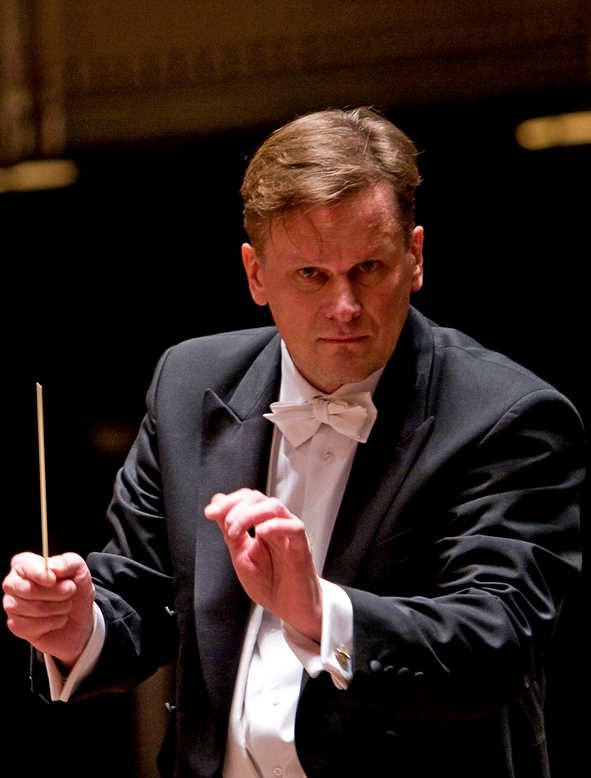by Nicholas Stevens

The ensemble welcomed back Stefan Willich, its perennial December guest conductor, for a four-night run, including a show at Lakewood Congregational Church on Friday, December 13. Always a chamber orchestra, CityMusic appeared to have reduced its numbers for this concert. The results of the changed balance varied across a program spanning many eras and styles.
A glittering first chord brought Rossini’s Overture to La Cenerentola into being, paired clarinets harmonizing in its wake. The violins made the most of a passage that calls for bowing at the bridge, and in general the string section moved with organic precision in pizzicato. The tiered seating system meant that the collective sound could become brittle, dominated by those higher up, but the players seated on the floor soon had a moment in the spotlight.
Suk’s Meditation on the Old Czech Chorale “Saint Wenceslas” found the string section sounding a bit like a vinyl record from another era and world, their collective vibrato lending a particular vintage warmth to every well-shaped phrase. Concertmaster Miho Hashizume led the violins safely over the chasm between a high entrance and bassist Tracy Rowell’s drone below, and in general the performance had a striking freshness and transparency.
Quite another section emerged as the protagonist in Haydn’s Symphony No. 59: the horns. Even with a higher-pitched instrument at his disposal, principal Nick Giralico had his work cut out for him on Haydn’s taxing part. He and second A.J. Carter nonetheless held their own, from supporting roles during the first three movements to brief moments in the limelight during the finale. Elsewhere, in the second movement, the violins gave shape and direction to the long succession of wandering melodies that Haydn assigned almost exclusively to them.
In Corelli’s Christmas Concerto, the group benefited from a return to music of chamber scale, and from the active rhythmic leadership of a continuo section versed in early music: harpsichordist QinYing Tan and principal cello Sophie Benn. Modern sounds flowed over this rock-solid foundation, Hashizume and principal second violin Minju Kim engaging in a fluid duet.
Mozart’s German Dances can feel devoid of the composer’s signature sound until, for instance, a slithering chromatic line leaps out of the texture. The high strings made the most of such a moment in the second dance. The third, a “sleigh ride,” afforded principal trumpet Nina Bell a rare opportunity to play lyrically, her tone as bright as, well, sun on snow.
Willich seemed particularly in his element during the “Knusperwalzer” from Hansel und Gretel, conjuring the sound of a much bigger ensemble from the group. A shared line for violas, cellos, and horns had all the eyebrow-raising richness of hot chocolate.
The clarinets and bassoons rose to the occasion of playing Tchaikovsky, in this case the “Prayer” from Mozartiana. A piano stood in for the harp, which worked in terms of timbre but unfortunately the instrument was a bit out of tune.
The violas and clarinets played bewitching trills in de Falla’s Ritual Fire Dance, which the entire group handled with tight coordination. It made for a strong contrast with the arrangement of Silent Night that followed, but then again, the orchestra did make a promise of contrast with its program theme, “Fire and Ice,” accommodating of holiday fare yet not beholden to it.
Published on ClevelandClassical.com December 16, 2019.
Click here for a printable copy of this article



